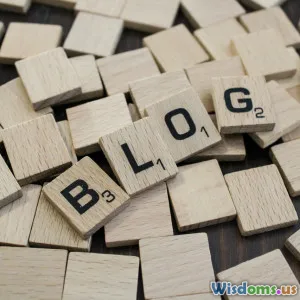
Writing Strong Video CTAs That Actually Get Results
8 min read Discover how to craft compelling video CTAs that drive engagement, boost conversions, and produce measurable results. (0 Reviews)
Writing Strong Video CTAs That Actually Get Results
Video marketing has exploded across all platforms in recent years. Yet, creating engaging video content isn’t enough if it doesn’t lead to action. One critical element that separates compelling videos from those that merely entertain is the Call To Action (CTA) — the prompt that guides viewers toward your desired outcome.
In this article, we’ll dive deep into how to write strong video CTAs that actually get results. We’ll explore what makes an effective CTA, why it’s pivotal in your funnel, various styles and placement strategies, and real-world examples that have moved metrics dramatically.
Why Video CTAs Matter More Than Ever
With 85% of internet users watching videos monthly and video content generating 1200% more shares than text and images combined (Wordstream, 2023), harnessing this medium is essential. However, the volume of video content creates noise where a simple “Subscribe” or “Visit Our Site” isn’t enough.
CTAs turn casual viewers into engaged prospects, helping you achieve goals like:
- Increasing conversions
- Boosting subscriber counts
- Encouraging social sharing
- Driving sales or sign-ups
A study by Wistia found that videos with a clear CTA increase viewer engagement by up to 380%, proving that CTAs are the linchpin in converting attention into action.
Core Elements of a Strong Video CTA
Crafting an effective CTA involves more than just urging viewers to "Click here" or "Buy now." Here are key components to focus on:
1. Clarity and Specificity
Ambiguous CTAs confuse viewers and reduce trust. Ensure your CTA states precisely what you want the viewer to do:
- Instead of “Check out our products,” say “Shop our limited-time summer sale.”
- Rather than “Subscribe,” try "Subscribe now for exclusive weekly marketing tips.”
Specificity connects with genuine intent, increasing clicks and conversions.
2. Urgency and Value
Incorporate a sense of urgency and explain the value or benefit. This triggers the psychological FOMO (fear of missing out). For example:
- “Sign up today and get 20% off your first order!”
- "Join the webinar—spots are filling fast!"
Urgency paired with a tangible benefit spikes motivation.
3. Relevance
Your CTA should align logically with video content, avoiding jarring or forced messages. If your video reviews a product, encouraging viewers to "Buy Now" or "Learn More" fits naturally.
4. Simplicity
Limit CTAs to one primary action per video. Overloading can overwhelm and paralyze viewers. Keep it concise and focused.
5. Action-Oriented Language
Use strong verbs that incite movement:
- "Download"
- "Register"
- "Explore"
- "Watch"
For instance, "Download our free eBook" outperforms vague requests.
6. Visual and Audio Reinforcement
Since video is multi-sensory, combining verbal CTAs with on-screen text, buttons, or graphics reinforces the directive, accommodating different viewer preferences.
Where and When to Place Your CTAs
The placement and timing of your CTA highly influence its effectiveness.
Beginning
For short videos, a quick-call CTA upfront can capture immediate attention—e.g., “Like our content? Subscribe now.”
Mid-roll
In longer videos (like webinars or tutorials), mid-roll CTAs allow engagement before final conclusions, facilitating seamless action without waiting.
End of Video (Most Common)
This is traditional placement though often missed if viewers drop off early. Pairing warm, persuasive messaging with CTA here is powerful: “Ready to take the next step? Click the link below!”
Interactive & Overlay CTAs
Many platforms (e.g., YouTube cards, Instagram stories) allow embedded clickable CTAs or polls, enabling instant interaction without interrupting viewing.
Real-World Example
Shopify uses creative CTAs effectively — in a product explainer video, viewers who saw the “Start Your Free Trial” CTA button during and at the close of the video showed a 25% higher trial signup than those exposed to only an end-screen CTA.
Types of Video CTAs with Examples
Lead Generation
- "Download our free checklist"
- Example: Neil Patel’s SEO videos often end with “Download your free SEO audit now.”
Subscription Growth
- "Subscribe to our channel for weekly marketing tips"
- Example: HubSpot encourages viewers to subscribe with specific benefits laid out clearly.
Sales and Discounts
- "Shop our 48-hour flash sale"
- Example: Glossier uses CTAs on Instagram videos highlighting limited-time discounts.
Social Engagement
- "Comment your thoughts below"
- Example: Wired magazine videos frequently shift conversations to social media with this tactic.
Event Registrations
- "Join our live webinar next week"
- Example: Moz’s webinars always pair mid-roll CTAs to boost signups.
Crafting Your CTA Script: Best Practices
Use Personalization
Address the viewer directly using “you” to create a one-on-one tone.
Keep It Short and Sweet
Optimal CTA length is 5 to 8 seconds verbally—enough to resonate but not distract.
Test and Optimize
Run A/B tests on wording, placement, and CTA types. Data-driven adjustments improve conversion rates over time.
Leverage Storytelling
Integrate CTAs within a narrative. Instead of an abrupt "Buy now," weave a story showing how the product changes lives, then close with the CTA.
Metrics To Measure CTA Success
Track these KPIs regularly to gauge and improve CTA performance:
- Click-through rate (CTR)
- Conversion rate
- View duration (how long viewers watch before CTA)
- Bounce rate after CTA
- ROI from CTA links (e.g., sales, signups)
Tools like Google Analytics, YouTube Analytics, and Vidyard’s video insights provide rich data on audience behavior.
Conclusion
The power of your video content is unlocked only when viewers know what to do next. Strong video CTAs are your roadmap guiding them to take meaningful, measurable action—whether subscribing, purchasing, or engaging further.
Emphasizing clarity, relevance, value, and strategic placement in your CTAs transforms passive watching into active participation and business growth.
Remember, the best CTAs aren’t generic commands; they’re thoughtfully crafted invitations to join a journey with your brand.
Ready to create CTAs that convert? Start by analyzing your audience motivations, and use the proven strategies in this article as your blueprint.
Produce, test, and refine—then watch your engagement and results soar.
References
- Wordstream: Video marketing statistics 2023
- Wistia: Video engagement research
- Shopify case studies on video CTAs
- HubSpot marketing best practices
- Vidyard Video Analytics reports
Rate the Post
User Reviews
Popular Posts


















